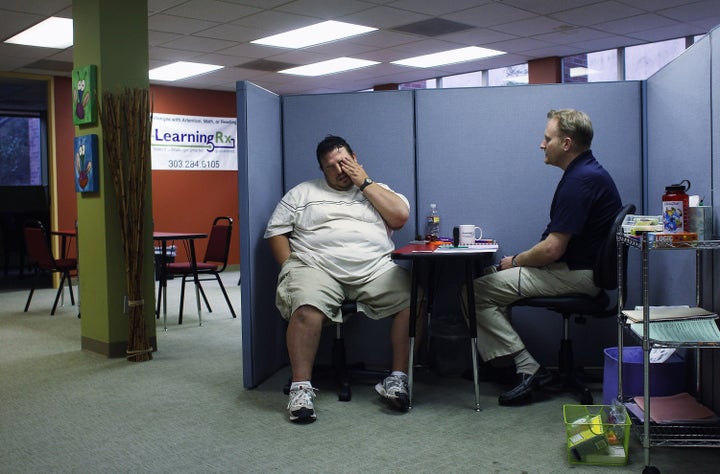
The numbers below come from a report released by Veterans for Common Sense (VCS), a nonprofit that "raises the unique and powerful voices of veterans" to protect and enhance our military, veterans, freedom, and national security. In assembling this report, VCS uses reports from the Department of Veterans Affairs (VA) and Department of Defense (DoD) that VCS obtained under the Freedom of Information Act (FOIA).
Military Deployments to War Zone Since September 11, 2001
2,226,056Total Service Members Deployed
941,743 Deployed Twice or More (42%)
Military Casualties in War Zone Since September 11, 2001
108,974 Total War Zone Casualties
6211 Deaths (6%), Includes 298 War Zone Suicides
45,889 Non-Fatal Wounded in Action (42%)
56,874 Non-Fatal Medical Evacuations Due to Injury or Disease (52%)
Veteran Post-Deployment Healthcare Use
1,442,987 Veterans Eligible for VA Healthcare
711,986 Veteran Patients Treated (49% of Veterans Eligible)
367,749 Veterans with Mental Health Condition (52% of Patients)
211,819 Veterans with Potential PTSD (30% of Patients)
9,700 Average New Veteran Patients Each Month
Veteran Post-Deployment Disability Claim Activity
1,442,987 Veterans Eligible for VA Disability Benefits
624,266 Veterans Filed Disability Claims (43% of Veterans Eligible)
133,595 Veterans Awaiting VA Decision (21% of Claims)
107,718 Veterans with Approved PTSD Claim (17% of Claims)
9,500 Average New Claims Filed by Veterans Each Month
Estimated Long-Term Impact on VA
1,032,000 Total New Veteran Patients, Dec. 31, 2013
938,000 Total New Veteran Claims, Dec. 31, 2013
Up to $900 Billion VA Healthcare and Benefit Spending Over 40 Years
Service Member and Veteran Suicides
462,854 Total Calls to VA's Veterans Crisis Line
259,891 Calls from Veterans from Any Period of Service
195,933 Members Calls from Others / Family
6,030 Calls from Active Duty Service
16,855 "Rescues" of Suicidal Veterans and Service Members
2,293 Active Duty Suicides Since January 2001
298 Suicides While Deployed in War Zone
1,995 Other Suicides (Deployment Status Unknown)
Unknown Suicides Among Iraq and Afghanistan Veterans
Veterans' Claims Pending at VA for All Periods of Service
1,097,489 Sep. 2011, Pending Veterans' Claims and Appeals
568,711 Mar. 2003, Pending Veterans' Claims and Appeals
528,778 Pending Claim Increase, Mar. 2003 to Sep. 2011
According to Paul Sullivan of VCS, "We are just at the front edge of this tsunami. Many more years lie ahead before we will see the peak of veterans seeking health care. Those still in the service are the most likely to need care." That is because those still in have been deployed two or more times. Veterans with mental heath conditions will increase from 52 percent of VA patients to 60 percent or higher.
Based on the new PEW research survey estimating half of veterans suffering from PTSD symptoms, Sullivan anticipates the number of veterans with potential longterm PTSD during their lifetime will as high as be 1.1 million, or half of the 2.2 million deployed to war since 9/11. Currently, 211,819 Iraq and Afghanistan are already diagnosed and treated by VA for PTSD. Sullivan believes the number of veterans seeking healthcare and disability benefits from the VA has increased because of several reasons: the poor job market, VA outreach, multiple deployments increasing a service member's need for care, and the decreased stigma of suffering from PTSD. What we need to especially concern ourselves with is the amount of funding VA will receive. As David Wood's most recent article, "As Veterans Fight For Needed Care, Long-Term Funding Remains A Question Mark, " for his series Beyond the Battlefield lays out, the Veterans Administration is severely underfunded for the current number of veterans needing care. Where will the additional funding come from to take care of this oncoming flood of veterans?
I just read the comments left in response to Woods's latest piece, and they do not encourage me that our country will find the collective will to take care of our veterans. The comments, for the most part, engage in finding blame for the situation rather than discussing possible solutions. And what Mr. Woods does not address in any detail is the consequence to all of us of our veterans not receiving care. Will we see a huge rate of suicide? Will mental illness become a contagion within families of veterans with PTSD? Because we know that when any member of a family suffers from trauma, the entire family absorbs and replicates the symptoms of the PTSD. Depression, substance abuse, rage follow. We are facing a vast segment of our population being impaired by the wounds these men and women are returning with. How do we begin to calculate those costs?
These are questions we must face now before we, as a country, have much more blood on our hands than we do already from the wars in Iraq and Afghanistan. Think of what we could have done with the $900 billion dollars we will spend on veterans' health care, not to mention the billions we have spent on weapons and the military. All in the name of taking out those weapons of mass destruction and defeating terrorism. We seem to have done a pretty good job of destroying and terrorizing ourselves.